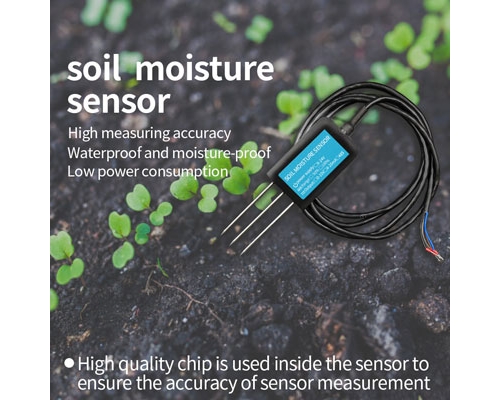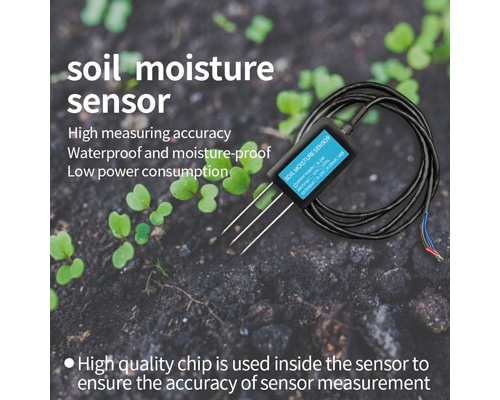Soil quality plays a crucial role in determining agricultural productivity and sustainability. Soil sensors have emerged as powerful tools in modern agriculture, enabling farmers to optimize crop management practices and make informed decisions based on real-time soil data. This article explores the significance of soil sensors in crop optimization, discusses the benefits they offer, and highlights how farmers can effectively integrate soil sensor technology into their farming operations. By harnessing the power of soil sensors, farmers can enhance their understanding of soil health, improve resource management, and maximize crop yields.
Introduction:
The quality of soil is a fundamental factor that directly influences crop growth, nutrient availability, and water holding capacity. Traditionally, soil analysis involved time-consuming and labor-intensive laboratory tests. However, advancements in sensor technology have revolutionized soil science and agricultural practices. Soil sensors provide real-time data on key soil parameters, allowing farmers to monitor soil conditions more efficiently and make precise decisions regarding irrigation, fertilization, and pest management. This article aims to explore the benefits and applications of soil sensors in crop optimization.
Benefits of Soil Sensors in Crop Optimization:
a. Real-time Monitoring: Soil sensors provide continuous and real-time measurements of essential soil parameters such as moisture content, temperature, pH levels, and nutrient concentrations. This allows farmers to identify potential issues promptly and make prompt adjustments to crop management practices.

b. Precision Irrigation: Soil sensors help optimize irrigation practices by providing accurate data on soil moisture levels. Farmers can set up automated irrigation systems that respond to real-time soil moisture data, ensuring that crops receive optimal water amounts and minimizing water wastage.
c. Nutrient Management: Soil sensors enable precise monitoring of nutrient levels in the soil. By understanding nutrient availability, farmers can apply fertilizers more efficiently, reducing the risk of over- or under-application. This not only improves crop yield but also minimizes the environmental impact of excess fertilizer use.
d. Disease and Pest Management: Certain soil sensors can detect indicators of plant diseases and pests. By analyzing soil conditions, farmers can identify potential threats early on, enabling them to implement timely interventions and prevent crop losses. This promotes sustainable pest management practices, minimizing the need for chemical pesticides.
e. Soil Health Assessment: Soil sensors provide valuable insights into soil health indicators such as organic matter content, compaction, and microbial activity. Regular monitoring of these parameters helps farmers assess soil fertility and make informed decisions regarding soil management practices, including cover cropping, crop rotation, and organic amendments.
f. Optimal Crop Selection: Soil sensors allow farmers to assess soil suitability for specific crops. By analyzing soil characteristics, such as texture and nutrient availability, farmers can make informed decisions about crop selection, maximizing yield potential and reducing the risk of crop failure.
g. Data Integration and Analysis: Soil sensor data can be integrated with other farm management systems, such as weather stations and satellite imagery. Analyzing combined datasets provides a comprehensive understanding of the interactions between soil, weather, and crop performance, enabling farmers to optimize their farming practices further.
Effective Integration of Soil Sensors in Farming Practices: a. Sensor Placement: Proper sensor placement is crucial for obtaining accurate and representative soil data. Sensors should be strategically installed at various depths and locations throughout the field, considering soil variability factors such as topography and soil types.
b. Data Interpretation: Farmers need to interpret sensor data effectively to make informed decisions. User-friendly software platforms and mobile applications can assist in data visualization and analysis, helping farmers identify trends, patterns, and actionable insights for crop optimization.
c. Calibration and Maintenance: Regular calibration and maintenance of soil sensors ensure data accuracy and reliability. Farmers must follow manufacturer guidelines and regularly check sensors for any signs of damage or malfunction.
d. Data-driven Decision Making: Successful integration of soil sensors requires farmers to embrace data-driven decision-making processes. This involves setting thresholds for optimal soil conditions, establishing alerts or notifications for critical parameters, and creating action plans based on sensor data.






